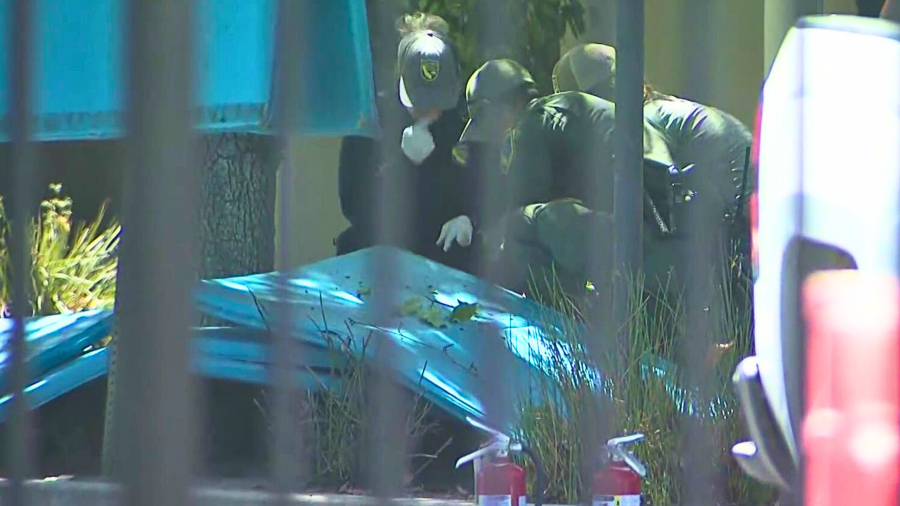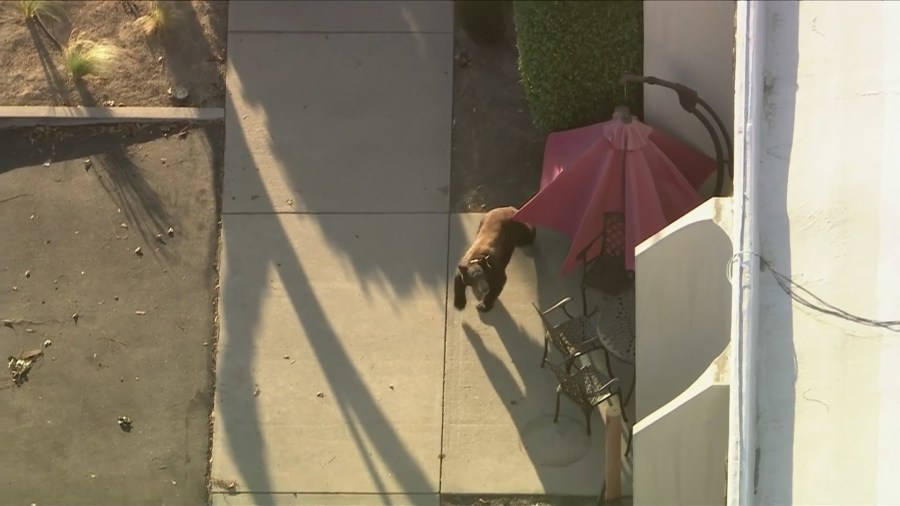A bear first spotted in Los Angeles Monday morning was finally captured after roaming free in Chatsworth for 24 hours.
The 5- or 6-year-old female black bear fell from a tree and onto a mat around 11 a.m. Tuesday after being tranquilized by California Fish and Wildlife officials.
Officials plan to return the bear to its habitat where “this time we hope it stays,” Fish and Wildlife spokesperson Tim Daly said.

An area resident named Crystal said she first heard about the bear Monday morning after a notification from Citizen that it was spotted near the Chatsworth Courthouse around 10 a.m.
By Monday night, the large bear was seen on video jumping fences and strolling through a yard.
Onlookers gathered and watched as the bear peeked back at them through the gate of a business.
Officers from the Los Angeles Police Department responded Monday and monitored the situation overnight.
Crystal decided to come out and see the bear at an industrial park near Independence Avenue and Lassen Street after getting another notification around 11 p.m. that the bear was still running around.
“It does seem a little afraid. It seems like it’s tying to avoid cars and people. For the most part it was just hiding … We were actually just about to leave and it finally came out, it ran across the street … and now it’s up on the tree,” Crystal said as onlookers continued to watch at 4 a.m. Tuesday.
“I’ve always wanted to see a bear. I’ve gone traveling and never seen a bear until here in my home city,” Crystal said.

Officials said they were well aware of the bear and its travels even before it was captured on Tuesday.
Fish and Wildlife personnel were in Northridge Monday to put out a trap, described by Daly as a large cage on the back of a trailer, but the bear did not go in.
Daly said the bear was initially captured in late May and given a tracking collar after being found in the community of Claremont.
It was then released into the Angeles National Forest and at one point traveled along the 210 corridor to near Malibu, which surprised researchers because female bears don’t typically travel as much as males, Daly said.
Officials had hoped the bear would find its way back to a suitable habitat on its own.
“What we don’t do is try to stop an animal from making its travels unless it gets into a dangerous situation,” Daly said. “This obviously is not near suitable habitat this morning in the middle of Chatsworth.”





















